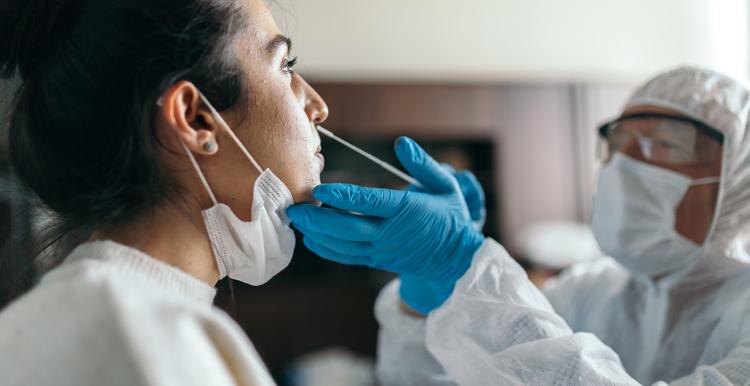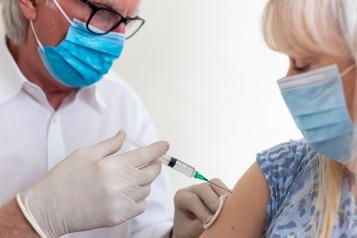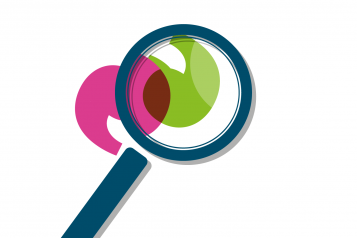Which COVID-19 test is right for you?

This article is correct as of 28 January 2022. For the latest information on COVID-19 tests visit the Islington Council website
I've tested positive for COVID-19 through my rapid lateral flow test - what do I do next?
Anyone who receives a positive lateral flow test result should report their result on GOV.UK and must self-isolate immediately but will not need to take a follow-up PCR test.
After reporting a positive lateral flow test result, you will be contacted by NHS Test and Trace so that your contacts can be traced and you must continue to self-isolate.
In line with the reduced self-isolation approach introduced on 13 January, anyone who tests positive will be able to leave self-isolation on day 6 if they receive 2 negative lateral flow test results, 24 hours apart, on days 5 and 6.
Which test do I need if I have COVID-19 symptoms?
You will need a PCR (polymerase chain reaction) test if you have at least one of these three coronavirus (COVID-19) symptoms:
- a high temperature
- a new, continuous cough
- you’ve lost your sense of smell or taste or it’s changed
Or...
- you’ve been in contact with someone who’s tested positive
- you’ve been asked to get a test by a local council or contact tracers
- a GP or other health professional has asked you to get a test
- you’ve been asked to get a test to confirm a positive result
- you need to get a test for someone you live with who has symptoms
If you come under any of the points above, book a visit to a test site to have the test today. Test sites are open 7 days a week.
Order a home test kit if you cannot get to a test site.
You should not use this service if you’ve received a positive PCR test result in the last 90 days, unless you develop any new symptoms or you are a close contact of someone who has been identified as a suspected or confirmed case of the Omicron variant of COVID-19.
Remember, if you have symptoms you should immediately self-isolate. Do not leave home until you get your test results, except to post a test kit or for a PCR test appointment.
What test should I take if I have been in contact with someone who has COVID-19 symptoms?
If you have been in close contact or live in the same household as someone with COVID-19, you must self-isolate unless you meet one of the following conditions:
- You are fully vaccinated
- You are below 18 years 6 months
- You have taken part in or are currently part of an approved COVID-19 vaccine trial
- You are not able to get vaccinated for medical reasons
Even if you are not required to self-isolate, NHS Test and Trace will contact you and will provide you with advice on testing and guidance on preventing the spread of COVID-19. You will be advised to have a PCR test as soon as possible.
People who are fully vaccinated and identified as a contact of someone with COVID-19 should take an NHS rapid lateral flow test every day for seven days to help slow the spread of COVID-19.
You will also need to take a PCR test if:
- You develop symptoms at any time, even if these are mild
- You have a positive result from a lateral flow test
- You are a close contact of someone who has been identified as a suspected to confirmed case of the Omicron variant of COVID-19
If your PCR result comes back positive you must self-isolate from the day you took the positive lateral flow test or developed symptoms. Find out how long you need to self-isolate for.
If your PCR test result comes back negative, you no longer need to self-isolate, but you should continue to take lateral flow tests for the remainder of the seven days.
Have you ordered a home test kit?
Make sure you register it so that you receive your results.
Having trouble ordering a test?
You can call 119 free of charge, anytime between 7am and 11pm seven days a week.
Can I get tested even if I don't have symptoms of COVID-19?
Yes, if you do not have symptoms you can be tested for the virus using a rapid lateral flow test:
- ask your employer or place of study if they provide rapid tests
- Islington Council is offering free rapid tests for people who live and work in Islington from a range of community sites.
Book a rapid test in Islington
Home testing kits (rapid lateral flow)
- You can order lateral flow tests from Gov.UK or by calling 119 to collect from a pharmacy or to get delivered to your home. Each box of tests contains seven tests.
- find a pharmacy where you can collect home test kits
- order rapid lateral flow home test kits online
How can I order COVID-19 rapid lateral flow tests?
You can go online to order free packs of rapid lateral flow tests to be sent to your home. A pack of tests contains 7 tests. You can order one pack per household each day.
Do I need to record my rapid lateral flow test result?
If you have had a rapid lateral flow test, you should get your result in 30 minutes after taking the test.
After your test packs arrive, you should take a rapid lateral flow test twice a week (every three or four days).
You must report a positive result to the NHS.
report your results by telephone - 119
What is surge testing and how do I take part?
Surge testing is increased testing (including door-to-door testing in some areas) and enhanced contact tracing in specific locations in England.
It involves testing of people who do not have any symptoms of coronavirus.
To see if your area is taking part in surge testing, click the link below.
Find out if surge testing is taking place near me
Home testing instructions in alternative formats
See instructions on testing for coronavirus at home in accessible formats.
Royal National Institute of Blind People (RNIB) can send you braille, audio or large print instructions. After ordering a home test you can either:
call the RNIB helpline 0303 123 9999 (Monday to Friday 8am to 8pm, Saturday 9am to 1pm)
Still not sure?
Head to the NHS website or phone 119 to find out which test is most suitable for you.


